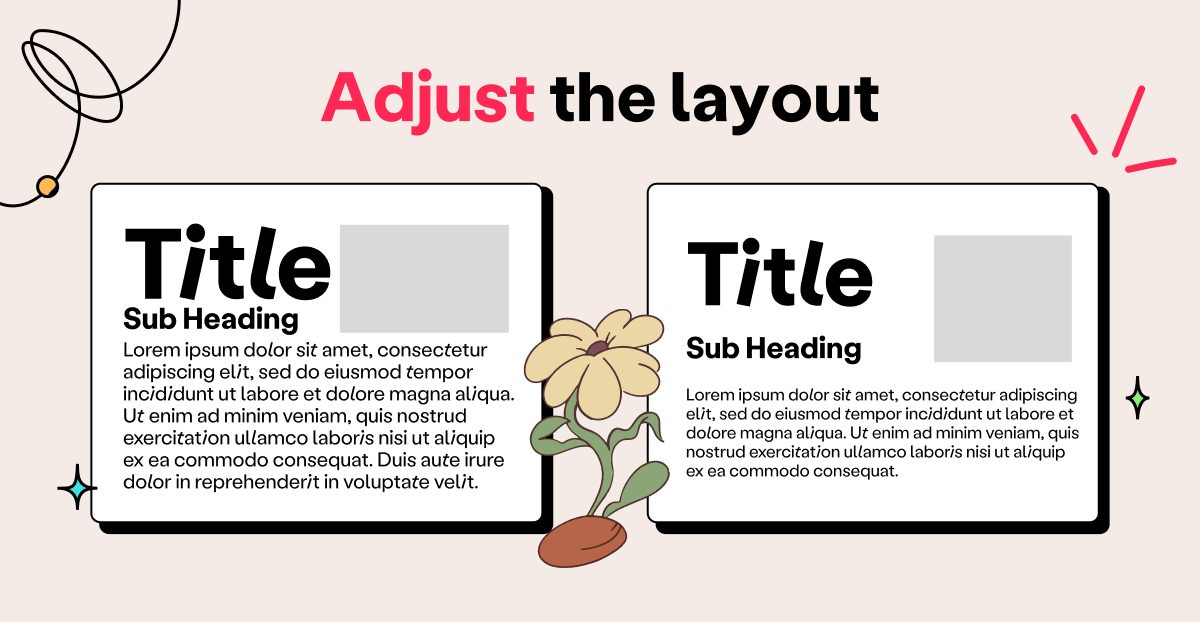In the world of design, the importance of typography cannot be overstated. It’s not just about words on a page; it’s about how those words look and feel. Typography can be a powerful tool for infusing personality and uniqueness into your designs. Custom typography, in particular, offers a wealth of opportunities to set your work apart and make a lasting impression. In this blog post, we’ll explore the art of adding personality to designs through custom typography.
1. Crafting a Visual Identity
Before delving into custom typography, it’s crucial to understand the essence of your brand or the message you wish to convey. Typography should be an extension of your identity. Consider the personality traits you want to convey: Is your brand modern and sleek, traditional and elegant, or perhaps playful and whimsical? Your choice of custom typography should reflect these characteristics.
2. The Allure of Custom Fonts
One of the most captivating ways to introduce personality into your designs is through custom fonts. Creating or commissioning a unique font that is exclusively yours can give your brand an edge. It becomes instantly recognizable and closely associated with your identity. This distinctiveness can leave a lasting impact on your audience.

3. The Personal Touch of Hand-Lettering and Calligraphy
To inject a human and artisanal quality into your designs, consider using hand-lettering or calligraphy. These techniques add a personal touch and create custom typography that is as unique as a fingerprint. It’s an excellent choice for businesses or projects that want to emphasize the human element.
4. The Power of Typography Pairing
Typography pairing is the art of combining different typefaces in a harmonious way. This technique allows you to create a visual hierarchy in your designs. For instance, you can pair a bold, decorative headline font with a simple, clean body text font to achieve a balanced and intriguing contrast. The combination of fonts can convey complexity, depth, and personality.

5. Custom Ligatures and Glyphs
Pay attention to the details by creating custom ligatures and glyphs. These small design elements can add charm and uniqueness to your text. They may be subtle, but they can make a significant difference in the overall impression of your design.
6. Playing with Color and Texture
Typography doesn’t have to be monochromatic. Experiment with colors and textures within your text. Consider using gradients, shadows, or textured backgrounds that align with your brand’s aesthetics. This can make your custom typography pop and add depth to your design, giving it that extra personality.
7. Size, Scale, and Emphasis
Varying the size and scale of your custom typography can help emphasize specific words or phrases, drawing the viewer’s attention where you want it. Use this technique strategically to highlight key messages and make them stand out.
8. Whitespace and Layout
The space around your text is as important as the text itself. Adequate whitespace enhances readability and makes your custom typography more impactful. Ensure that your layout complements the style and personality you’re aiming for.

9. Consistency is Key
Once you’ve established your custom typography, maintain consistency in its use across all your designs. Consistency reinforces your brand identity and helps your audience recognize you more easily.
10. Audience-Centric Approach
Think about your target audience when choosing custom typography. It should resonate with them and reflect their preferences and expectations. Tailoring your typography to your audience can make your designs more appealing and relatable.
11. The Art of Experimentation
Don’t be afraid to experiment. Try different typography styles, layouts, and treatments to discover what works best for your design and message. Experimentation can lead to unexpected and exciting results.
12. Responsiveness Across Platforms
If your designs will be used on various platforms such as websites, mobile apps, or print media, test how your custom typography adapts to different screen sizes and resolutions. Ensure it remains visually appealing and functional in all scenarios.
13. Seek Professional Guidance
If you’re not a typography expert, consider consulting with a professional designer or typographer. Their expertise can provide invaluable insights and guidance in creating the perfect custom typography for your needs.
Incorporating custom typography into your designs is a creative and effective way to express the personality of your brand or convey your desired message. It leaves a lasting visual mark on your audience, setting you apart from the competition. Whether it’s through custom fonts, hand-lettering, typography pairing, or attention to detail, the art of custom typography is a dynamic canvas for expressing your unique identity. So, go ahead and let your designs speak with a distinct voice through custom typography!